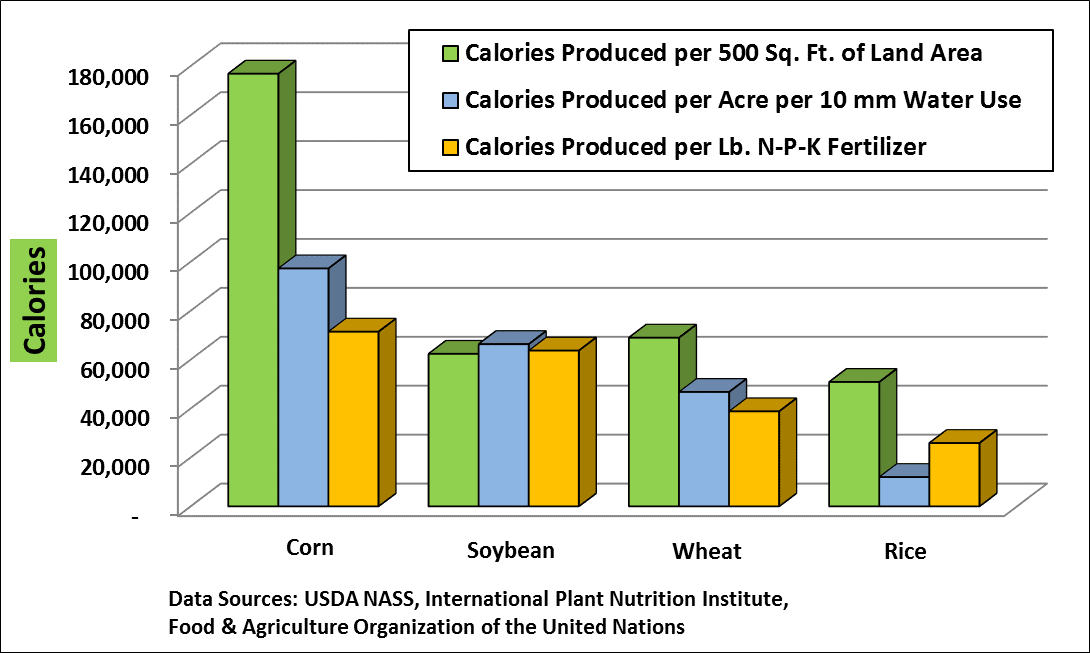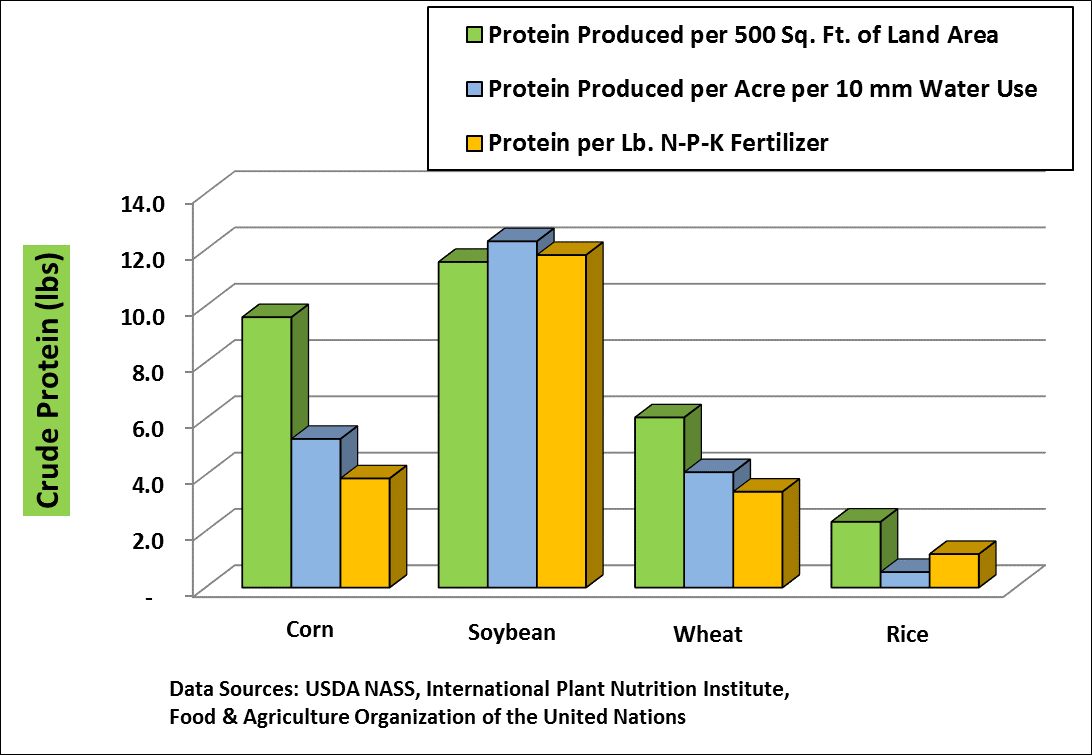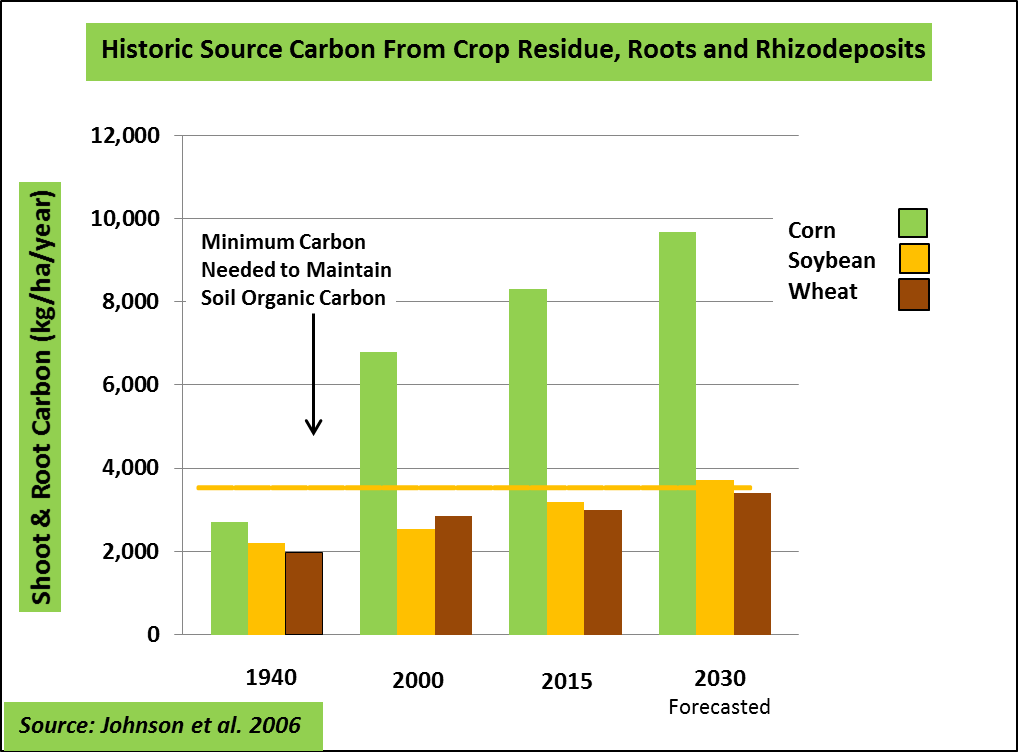The next time you’re in farm country driving by a field of corn, try looking at that crop from a new angle — not the commodity grain that drives big parts of the rural economy, not the mono-culture some critics decry, but a hard-at-work carbon capture machine. What you’re really driving past is a system of photosynthesis so vast and so powerful in its ability to pull carbon from the air that at peak times of the year it outperforms even the Amazon rainforest.
Thanks to evolutionary efficiencies in its cellular pathways, along with strides in breeding technology that have driven huge improvements in yield, corn can suck more carbon dioxide out of the atmosphere than most plants — and certainly more than any mechanical or chemical technology humans have ever attempted.
“It puts [CO2] into a form we can grab,” explains Ron Alverson. “It’s just so efficient at converting that carbon from the atmosphere in to carbohydrates, or the sugars that make up the entire plant structure.”
High production of plant biomass (roots and stover) means a lot of atmospheric carbon is added to the land. For Ron and Keith Alverson of K2 Farms, that’s meant dramatic increases in the soil carbon of their field. In other words, when managed properly, corn crops change carbon from the atmosphere to carbon in the soil.
The key is photosynthesis — and corn is incredibly efficient at it.
Most people know that plants use sunlight, atmospheric carbon dioxide, and water to build carbohydrates during the photosynthesis reaction. Fewer realize that corn is among a relatively rare subset of plants — approximately three percent —that botanists refer to as “C4” plants. The term refers to the chemical pathway the carbon atoms take as they move through the plant. C4s are able to turn sunlight, CO2 and water into carbohydrates almost twice as efficiently as C3 plants, such as soybean, wheat or rice.
Satellite imagery techniques developed by NASA scientists can actually measure the magnitude and intensity of photosynthesis by plant material on the earth’s surface. This satellite imagery indicates that during peak growth periods of corn, the magnitude of photosynthesis is far greater than anywhere on earth, exceeding even the Amazon rain forests by 40 percent.
Why is that important? Because photosynthesis may be one of our best hopes of remediating carbon dioxide from the atmosphere. C4 plants do it better than any other crop — and although they only represent three percent of flowering plant life, they’re responsible for 25 percent of all photosynthesis on land.
That makes corn the reigning champion of carbon capture. And it makes those hundreds and thousands of acres you drive by gigantic atmospheric scrubbers.
Of course to many, farm crops are just a normal part of the annual carbon cycle: plants take in CO2 as they grow, plants release it when they decompose or are consumed.
“What makes corn different is that we’ve figured out ways to grow vastly more of it on the same patch of land,” Keith Alverson explains. “We’ve been able to breed varieties with bigger leaves and bigger yields. And every one of those leaves is a photosynthesis machine.”
So we when you see big corn crops, what you’re really looking at is a carbon capture colossus. Expecting any other crop to perform like corn would be like putting in a pinch hitter for Babe Ruth.
Image Credit: NASA’s Goddard Space Flight Center
Because the rate of photosynthesis drives crop productivity, no major crop exceeds C4 corn for efficient calorie production!
Corn is only behind soybean for efficient protein production !
Corn is the only grain crop that provides enough biomass carbon to build soil organic carbon stocks!
K2 Farm’s goal is to use the least land, water and fertilizer to produce calories and protein, and also to build soil carbon stocks and improve soil health. Planting any other crop than corn is like pinch hitting for Babe Ruth!




